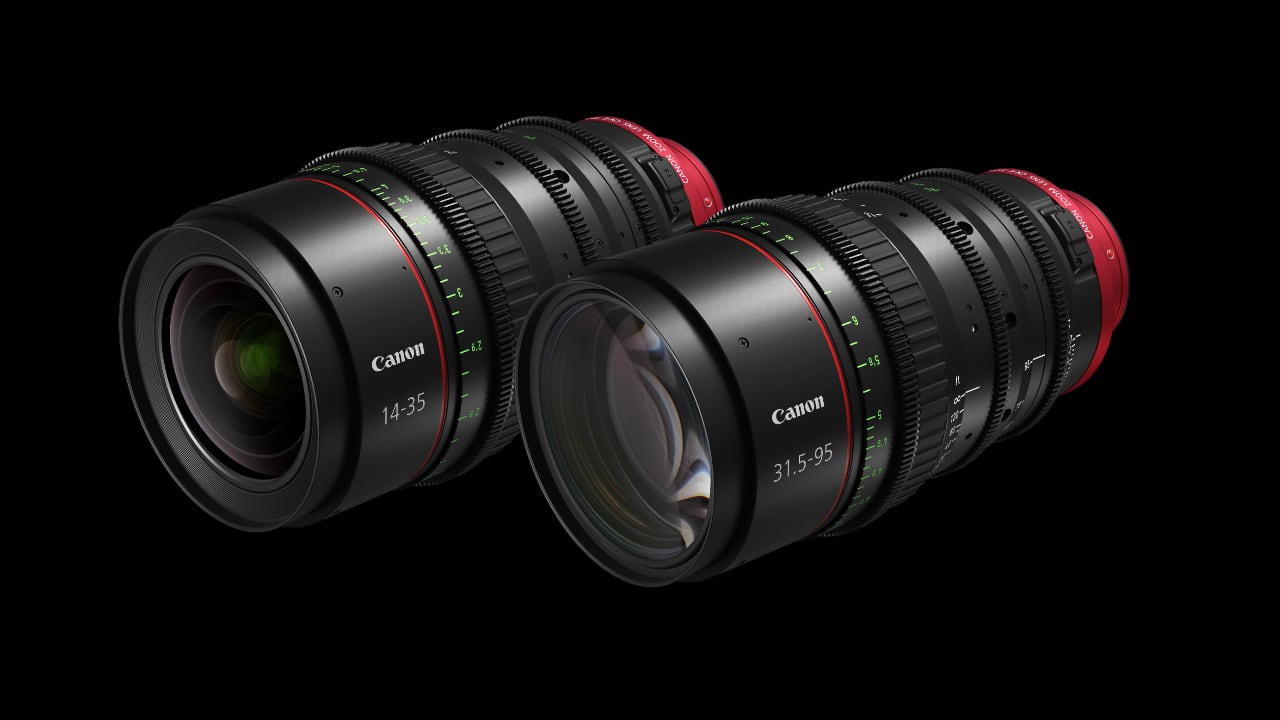
The CN-E14-35mm T1.7 L and CN-E31.5-95mm T1.7 L join Canon’s Flex zoom line-up, while there are also EOS firmware updates and some new PTZ capabilities too from the company.
The latest additions to Canon’s Flex Zoom range, the CN-E14-35mm T1.7 L and CN-E31.5-95mm T1.7 L, offer a fast, constant aperture of T1.7 that creates a shallow depth of field to ensure subjects stand out, whilst also enhancing the compatibility with fast prime lenses when being used together in the same production. 11 Iris blades produce what the company describes as “a beautiful” bokeh effect and softly diffused light, also achieving warm colours and true-to-life skin tone reproduction.
Canon’s pitching these at high-end 4K and 8K HDR cinema work. In addition to an interchangeable mount design that enables the lens to be switched between EF and PL mounts, these two are the first lenses in Canon’s cinema range that make use of Canon’s interchangeable relay kit, enabling them to be switched from Super 35mm to Full Frame and back again. It’s not a simple operation, it has to be undertaken at an authorised service centre and it will cost, but it is useful.
Both lenses support lens metadata workflows including Cooke /i Technology, and ZEISS eXtended Data via PL mount, alongside 4-pin Lemo connectivity. Electronic lens communication with chromatic aberration and peripheral illumination correction, as well as a Dual Pixel Focus Guide for manual focus assist via EF mount is available when used with compatible cameras.
And talking of compatibility, the CN-E14-35mm T1.7 L and CN-E31.5-95mm T1.7 L feature 0.8mm gears which are compatible with industry-standard follow focus accessories and external motors. Weight is just 3.3kg and 3.5kg respectively.
We’re still waiting on official pricing and availability information, but as a guide pricing the existing lenses in the Flex range are around the £17,500 mark
EOS updates
New firmware updates look like they will slightly enhance and expand the capabilities of the EOS R5 C, EOS C70, EOS C300 Mark III and EOS C500 Mark II cameras.
The update will bring a high resolution Clear Scan function, offering a more concise range from 50 to 250Hz, providing greater synchronisation support when shooting LED screens on virtual productions. In addition, an option to change the in-camera waveform monitor size, as well as further metadata support for the latest Canon lenses, has been added.
Improvements to the EOS R5 C include support for the EF-EOS R 0.71x Mount Adapter, faster switching time between photo and video modes, a power saving mode, 2x magnification during 8K MP4 recording and a digital-teleconverter option, maximising flexibility by providing a quick way to increase the telephoto capability of the lens used.
As yet, Canon hasn’t told us when they will be available.
PTZs add capabilities
Lastly, two new apps available via Canon’s Add-On Applications System, enable PTZ users to add new functionalities for video production, while there is also a new firmware update to widen the number of supported devices. First announced in January, and showcased at ISE 2023 with the CR-N700, the two apps – Canon’s Auto Tracking Application RA-AT001 and the Auto Loop Application RA-AL001 – will be able to be used with the CR-N500, CR-N300 and CR-X300 from August.
Powered by the advanced drive mechanism in its PTZ cameras, a new Auto Tracking application for the CR-N500 and CR-N300 PTZ units automatically tracks people with precision, to ensure they are always framed and in-shot, without the intervention of a camera operator.
The Auto Loop application is being made available for the CR-N500, CR-N300 and CR-X300, enabling the cameras to follow a pre-programmed, automated pan/tilt/zoom movement without the need for an operator to manually change the shot. Two movement pattern options, loop or back-and-forth, give greater flexibility to choose movements that suit each shooting environment. To ensure footage looks natural amongst a multi-camera set up, the application offers smooth adjustment of start-stop acceleration/deceleration to simulate manual camera movements. These features are easily programmable via a single screen, where operators can apply position and route settings and even access a preview, as well as control the speed of movement and duration of pause at each position.
The Auto Tracking and Auto Loop applications are both currently available for the CR-N700 and will be available for other PTZ models with the firmware update later in 2023.
Tags: Production Lenses


Comments